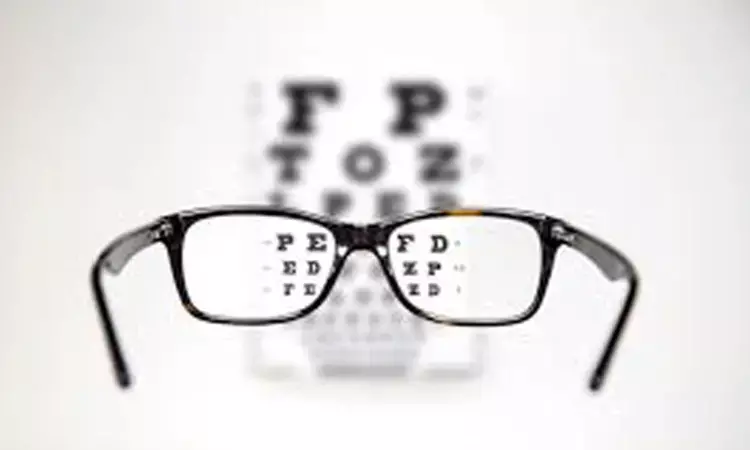- Home
- Medical news & Guidelines
- Anesthesiology
- Cardiology and CTVS
- Critical Care
- Dentistry
- Dermatology
- Diabetes and Endocrinology
- ENT
- Gastroenterology
- Medicine
- Nephrology
- Neurology
- Obstretics-Gynaecology
- Oncology
- Ophthalmology
- Orthopaedics
- Pediatrics-Neonatology
- Psychiatry
- Pulmonology
- Radiology
- Surgery
- Urology
- Laboratory Medicine
- Diet
- Nursing
- Paramedical
- Physiotherapy
- Health news
- Fact Check
- Bone Health Fact Check
- Brain Health Fact Check
- Cancer Related Fact Check
- Child Care Fact Check
- Dental and oral health fact check
- Diabetes and metabolic health fact check
- Diet and Nutrition Fact Check
- Eye and ENT Care Fact Check
- Fitness fact check
- Gut health fact check
- Heart health fact check
- Kidney health fact check
- Medical education fact check
- Men's health fact check
- Respiratory fact check
- Skin and hair care fact check
- Vaccine and Immunization fact check
- Women's health fact check
- AYUSH
- State News
- Andaman and Nicobar Islands
- Andhra Pradesh
- Arunachal Pradesh
- Assam
- Bihar
- Chandigarh
- Chattisgarh
- Dadra and Nagar Haveli
- Daman and Diu
- Delhi
- Goa
- Gujarat
- Haryana
- Himachal Pradesh
- Jammu & Kashmir
- Jharkhand
- Karnataka
- Kerala
- Ladakh
- Lakshadweep
- Madhya Pradesh
- Maharashtra
- Manipur
- Meghalaya
- Mizoram
- Nagaland
- Odisha
- Puducherry
- Punjab
- Rajasthan
- Sikkim
- Tamil Nadu
- Telangana
- Tripura
- Uttar Pradesh
- Uttrakhand
- West Bengal
- Medical Education
- Industry
Early Myopia onset tied to risk of high myopia later on: JAMA

The risk of developing high myopia is relatively high among children with myopia onset at a young age, while each year of delay in the age of onset substantially reduces the chance of developing high myopia in adulthood, according to recent research published in JAMA ophthalmology.
The development of high myopia carries risks of irreversible blinding complications including glaucoma, retinal detachment, and myopic maculopathy. The World Health Organization defines myopia as a condition in which the spherical equivalent objective refractive error is ≤ –0.50 diopter (–0.50 D) in either eye. However, in this study, researchers classified high myopia as the spherical equivalent of −6.00 diopters or worse determined by cycloplegic refractions.
"It is widely acknowledged that the earlier the age at onset [of myopia], the greater the percentage of the population with high myopia," says Y Hu, the lead author of the study.
Inhis population-based prospective cohort study, Hu and his colleagues recruited twins aged 7 to 15 years, while follow-up visits were completed annually. Data were obtained from the Guangzhou Twin Eye Study, which began in 2006 in China.
Atotal of 443 individuals were included in the analysis and the majority (55.8%) were female. Data showed a mean (SD) age of myopia, onset was 11.7 (2) years. Over the course of the study, 54 (12.2%) developed high myopia in adulthood (age 17 or older).
The researchers came to the following findings-
Among participants with age at myopia onset of 7 or 8 years, 14 of 26 developed high myopia in adulthood
Among those with onset at 9 years of age, 12 of 37.
Among those with onset at 10 years of age, 14 of 72.
Among those with onset at 11 years of age, 11 of 78.
Among those with onset at 12 years or older, 3 of 230.
The results highlight the need for implementation of myopia prevention strategies, such as increased outdoor time, the authors argued.
Finally, they concluded that "The risk of developing high myopia is relatively high among children with myopia onset at a young age."
Dr. Nandita Mohan is a practicing pediatric dentist with more than 5 years of clinical work experience. Along with this, she is equally interested in keeping herself up to date about the latest developments in the field of medicine and dentistry which is the driving force for her to be in association with Medical Dialogues. She also has her name attached with many publications; both national and international. She has pursued her BDS from Rajiv Gandhi University of Health Sciences, Bangalore and later went to enter her dream specialty (MDS) in the Department of Pedodontics and Preventive Dentistry from Pt. B.D. Sharma University of Health Sciences. Through all the years of experience, her core interest in learning something new has never stopped. She can be contacted at editorial@medicaldialogues.in. Contact no. 011-43720751
Dr Kamal Kant Kohli-MBBS, DTCD- a chest specialist with more than 30 years of practice and a flair for writing clinical articles, Dr Kamal Kant Kohli joined Medical Dialogues as a Chief Editor of Medical News. Besides writing articles, as an editor, he proofreads and verifies all the medical content published on Medical Dialogues including those coming from journals, studies,medical conferences,guidelines etc. Email: drkohli@medicaldialogues.in. Contact no. 011-43720751


